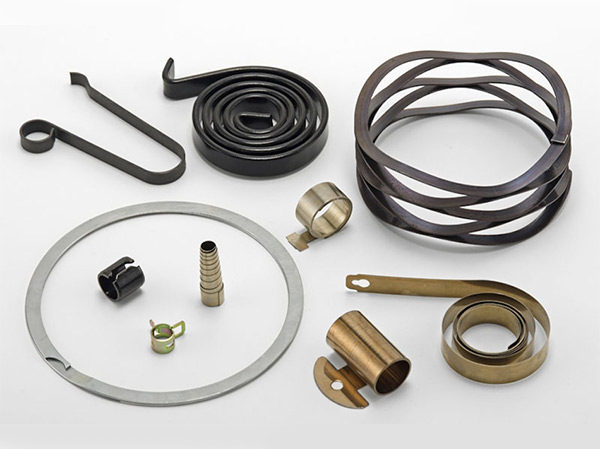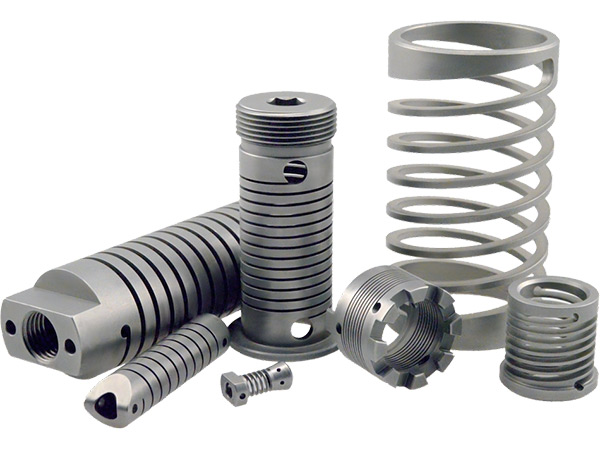Springs can also be classified by how they’re made. The first spring that comes to most people’s minds is probably a metal coil spring, also known as a helical spring. However, there are many other types. Even an elastic band can be considered a variable rate spring, since it stores mechanical energy.
Coil Springs
Lightweight coil springs are made by forming metal wires on an CNC coiling machine. The multi-axis CNC control allows you to create variable pitches and end conditions only limited by your imagination. Springs that come off the coiling machines do not have springy properties. They need to be heated to a high temperature (typically 500 degrees Fahrenheit or more) to relieve stress, then quenched to create shape memory.

In contrast, when making heavy duty coil springs, the wire is heated up before coiling.
Flat Springs
Flat springs come in all sorts of sizes and shapes: Spring washers, PCB spring contacts, and retainer clips are all examples of flat springs. Essentially sheet metal parts, they can be made by stamping. However, there are coiled flat springs as well, such as clock springs and volute springs. They also need be heat treated for shape memory.
Machined Springs
Machined springs and die springs are used for heavy duty applications with high strength and precision requirements. As the name suggests, machined springs are made on CNC lathes and mills.

Molded Springs
Plastic or composite springs are commonly found in corrosive environments, such as food production, medical, and marine applications. Due to creep, they should only be used in intermittent cycles. Compared to metal springs, they are relative newcomers to the space, and supply is not as abundant.